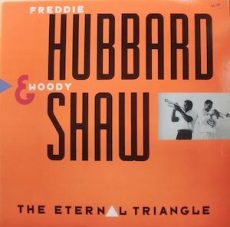
Requisites
The Eternal Triangle ~ Freddie Hubbard and Woody Shaw | By Eddie Carter
Freddie Hubbard and Woody Shaw enter this morning’s spotlight with a superb 1987 sextet album, The Eternal Triangle (Blue Note B1-48017). I’m a long-time fan of both trumpet players and have been listening to their albums recently. The Eternal Triangle is their second collaboration after Double Take, recorded and released two years earlier. Freddie is heard on the left channel, and Woody is heard on the right channel. Returning from the earlier session are Kenny Garrett on alto sax, Mulgrew Miller on piano and Carl Allen on drums. Ray Drummond takes over on bass for this date. My copy is the original U.S. Stereo release.
Down Under by Freddie Hubbard starts Side One with the rhythm section’s infectious introduction to the sextet’s danceable theme. Freddie kicks off the opening line with a strong tone. Mulgrew continues the effortless swing in the following reading. Woody makes quick work of the third solo, and then Kenny has a fine spot ahead of the ensemble’s return that fades out slowly. The Eternal Triangle by Sonny Stitt comes at you fast and furious from the sextet’s rapid-fire melody. Hubbard takes us for a high-speed ride first, and then Garrett heats things up in the second statement. Shaw steps up next for an aggressive reading. Miller gives a spirited presentation, and Carl ends the solos with a brisk workout into the reprise and quick stop.
The Moontrane by Woody Shaw takes off with him leading the ensemble in a lively melody. Woody is the first soloist, and he comes out swinging. Kenny gives a brisk reading in the second spot. Freddie adds a bit more fuel to the fire in the following statement, and Mulgrew leads us to a swinging conclusion with an inspired interpretation. Side Two gets underway with the sextet keeping its foot on the gas for Calling Miss Khadija by Lee Morgan. It begins with the rhythm section’s introduction; then, the front line joins in for the melody. Shaw ignites the song’s first brightly burning flame. Miller whets our appetite further in the second statement, and then Hubbard has a few memorable moments next. Garrett comes in to give a sizzling solo, and Carl gets the last word in a vigorous finale before the ensemble returns.
I first heard Freddie Hubbard’s Nostrand and Fulton on an earlier album, Here To Stay. The song’s title comes from a Brooklyn intersection, and the sextet begins the melody vibrantly. Freddie dives into the opening solo and wails, then Kenny follows with some heated sax play. Woody tackles the next reading with passionate fire, and Mulgrew closes with a very enthusiastic statement ahead of the theme’s reprise and conclusion. Tomorrow’s Destiny by Woody Shaw is off to the races from the sextet’s opening chorus. Miller is up first with a solo of high-spirited delight. Shaw goes to work next on a swift reading, then comes Hubbard’s exhilarating statement. Garrett builds the song’s final interpretation into an impressive conclusion preceding the ensemble’s ending theme and exit.
Michael Cuscuna and Don Sickler produced The Eternal Triangle. The recording engineer was Rudy Van Gelder. It is a full digital recording that emerges from your speakers with a stunning soundstage. The musicians are transported to your listening room with excellent fidelity. The pressing is also quite good, and the record is noticeably quiet until the music starts. If you are a fan of Freddie Hubbard and Woody Shaw, I hope you will consider The Eternal Triangle on your next record shopping trip. In my opinion, it’s one of the best albums in both musician’s discographies and a terrific release worthy of a spot in any jazz lover’s library!
~ Double Take (Blue Note BT-85121), Here To Stay (Blue Note BST-84135) – Source: Discogs.com © 2024 by Edward Thomas Carter For the serious collector of jazz… #Jazz #Classic #Collectible #Music #Notorious
More Posts: choice,classic,collectible,collector,history,instrumental,jazz,music,trumpet
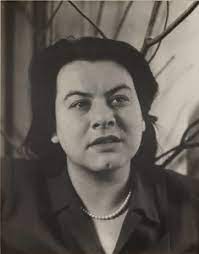
Jazz Poems
HOMAGE TO LITERATURE When you imagine trumpet-faced musicians blowing again inimitable jazz no art can accuse nor canonadings hurt, or coming out of your dreams of dirigibles again see the unreasonable cripple throwing his crutch headlong as the headlights streak down the torn street, as the three hammerers go One, Two, Three on the stake, triphammer poundings and not a sign of new worlds to still the heart; then stare into the lake of sunset as it runs boiling, over the west past all control rolling and swamps the heartbeat and repeats sea beyond sea after unbearable suns; think poems fixed this landscape: Blake, Donne, Keats. MURIEL RUKEYSERfrom Jazz Poems | Selected and edited by Kevin Young
More Posts: book,classic,collectible,history,jazz,library,poet
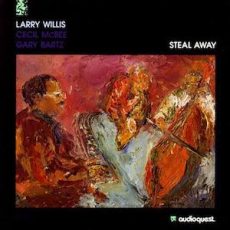
Requisites
Steal Away ~ Larry Willis | By Eddie Carter
This morning’s album from the library is Steal Away (AudioQuest Music AQ-LP 1009), a little-known release by pianist Larry Willis. It’s the first of two records Willis made for the label and his seventh as a leader. He’s joined on this date by Gary Bartz (tracks: A2, B1) on alto sax and Cecil McBee (A2, B1, B2) on bass. My copy is the 1992 U.S. Stereo audiophile album.
Side One opens with Valdosta Blues by Larry Willis, the first of three solo piano performances. The title comes from the city in Georgia and begins with the pianist’s tranquil introduction that builds to a breezy melody. His ensuing solo is a superb performance that moves easily toward an exquisite ending.
The title tune, Steal Away, is an American Negro spiritual by Wallace Willis. It has been with Larry since age three and was a favorite song of his Mother’s to sing. Willis opens with a delicately gentle introduction to Bartz and McBee’s very pretty melody. Gary’s opening solo is imaginative and confident. Larry follows with sweet notes that shine like the rays of the sun, and Cecil breezes blissfully through the closing statement into a gentle climax. Fallen Hero is Larry’s tribute to his brother Victor. He tells an intimate story that reveals his love and affection for his brother with reflective inspiration and tenderness.
“D” Bass-ic Blues by Cecil McBee starts with the bassist’s bowed introduction, setting up Bartz and Willis to join him in a medium-tempo theme. Larry eases into the first solo with joyful vitality. Gary keeps the ball rolling with a remarkable reading of melodic lines. Cecil lets his bass do the talking in the finale preceding the theme’s reprise and conclusion. Ethiopia is a hauntingly beautiful song by Larry Willis that’s presented as a duet with Cecil McBee. The duo starts with a tender melody, and then Larry’s opening statement is as gentle as a light summer rain. Cecil comes in next with a graceful interpretation ahead of the duo’s delicately pretty ending.
The Meaning of The Blues by Bobby Troup and Leah Worth is given a tasteful treatment by Willis. He makes the song his own in a solo showcase that’s warm and nostalgic, thoughtful and heartfelt into a serene finale of haunting dreaminess. Joe Harley produced Steal Away, Pierre M. Sprey was the recording engineer, and Bernie Grundman mastered the album. It’s a pure analog recording with a stunning soundstage that was pressed on 180 grams of audiophile vinyl and is a perfect demonstration record for any quality audio system. Larry Willis recorded twenty-one albums as a leader and many more as a sideman. If you’re a fan of piano jazz, I invite you to consider Steal Away by Larry Willis on your next record-shopping trip. It’s an excellent place to start your discovery of his music and a welcome addition to any jazz fan’s library!
~ Fallen Hero, Ethiopia, “D” Bass-ic Blues – Source: Album Liner Notes by Bill Kohihasse
~ American Negro Spirituals were songs that contained hidden codes and messages for enslaved people to escape on their own or through the Underground Railroad – Source: Wikipedia.org © 2023 by Edward Thomas Carter
More Posts: choice,classic,collectible,collector,history,instrumental,jazz,music,piano
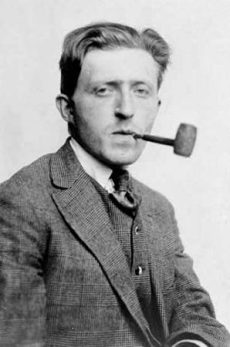
Jazz Poems
BRINGING JAZZ (Odd-numbered lines spoken slowly even -numbered ones quickly) Last night I had an oboe dream— Whistlers in a box-car madness bringing jazz Their faces stormed in a hobo-gleam, Blinding all the grinding wheels and singing jazz. The box-car gloried in its dirt— Just as hallelujah made of chanting mud. And one old bum opened up his shirt Showing wounds of music in his ranting blood. The hoboes sang with scorching notes Burning up the pain into a gale of jazz, While sadness poured in their shaking throats, Like a molten bugle in a wail of jazz. The rails were jails for death and rust— Holding up the cruel, dark blue speed of jazz— But life still stirred underneath their crust— Little hums and clicks brought by the need of jazz. Within the box-car, hoboes leaped— Fatalists and pagan in a carefree trap— And when they sang of hungers reaped, Bread and wine of sound came from a dark god’s lap! The hoboes made a fox-trot blaze— Scorning women, gliding in a sexless dance— And on their coats of ragged baize- Ghosts of orchids fluttered down and looked askance! The jungle sent a moan of sound—- Made it blend into an oathof northern grime. A music came, flaring and profound, Flayed with rapture half repelled and half sublime. And then I saw the dream’s dark spring—- Hurricanes of jazz born from the underworld. “Saint Louie Gal with a diamond ring” Danced with mobs of hoboes while the thunder swirled! MAXWELL BODENHEIMfrom Jazz Poems | Selected and edited by Kevin Young
More Posts: book,classic,collectible,history,jazz,library,poet
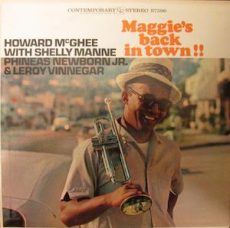
Requisites
Maggie’s Back In Town ~ Howard McGhee | By Eddie Carter
Howard McGhee opens this morning’s discussion with a superb 1961 album, Maggie’s Back In Town (Contemporary Records M3596/S7596). He was one of the earliest jazz musicians to begin playing bebop and became a leading trumpet player during the Forties. Howard was also an excellent arranger and composer who performed with some of the elite musicians during that era. Drug problems derailed his career during the fifties, but he returned in 1960 and recorded two impressive albums for Lester Koenig’s label. A first-class trio joins him on this studio session: Phineas Newborn Jr. on piano, Leroy Vinnegar on bass, and Shelly Manne on drums. My copy is the 1975 US Stereo reissue.
Side One opens with a Howard McGhee original, Demon Chase. The quartet swings easily into the melody; then, Howard gets to the song’s core first. Phineas follows happily along in the second reading. McGhee returns on muted horn with a solo that’s sheer heaven. Leroy closes things out ahead of the finale. Willow Weep For Me by Ann Ronell is one of the most beautiful and recorded song’s from The Great American Songbook. Newborn makes the introduction segueing into McGhee’s muted slow-tempo theme and mellow opening statement. Phineas demonstrates tenderness and intimacy next, and then Howard takes the song out thoughtfully with the mute removed.
Softly, As In a Morning Sunrise by Sigmund Romberg and Oscar Hammerstein II is taken at a brisk clip, with the leader’s mute building the melody effectively. Howard delivers the song’s only solo with joyful vitality fueled by the trio’s exceptional support ahead of the closing chorus and climax. Sunset Eyes by Teddy Edwards ends the first side. The rhythm section sets the scene for McGhee’s easygoing melody. The tempo moves upward for a fascinating interpretation by the leader. Newborn also puts together a well-constructed offering preceding the closing chorus and gentle fadeout.
Side Two starts with Maggie’s Back In Town, by Teddy Edwards. The title refers to Howard’s nickname and his return to the jazz scene after battling drug addiction. The quartet’s bluesy theme gets things underway, followed by Howard’s warm welcome in the first solo. Newborn’s second statement is as delicious as a good meal. McGhee returns for a short reading, and then Vinnegar takes a relaxing walk. Manne shares the closing statement with Howard ahead of the ending theme. Summertime by George and Ira Gershwin and DuBose Heyward starts at mid-tempo, with the leader back on a muted trumpet. McGhee’s solo is as enjoyable as a day at the seaside until the close.
Brownie Speaks by Clifford Brown takes off with the foursome’s vigorous uptempo workout. Howard generates plenty of heat in the first solo. Phineas takes a scintillating statement next. Leroy follows with a short, robust comment, and the leader’s finale flows vibrantly toward the climax. Lester Koenig produced Maggie’s Back In Town, and Roy DuNann was the recording engineer. It’s a great-sounding reissue with an outstanding soundstage that brings the quartet to your listening room with stunning fidelity. If you’re in the mood for a hard-bop album with great tunes and tight musicianship, I invite you to check out Maggie’s Back In Town by Howard McGhee on your next record shopping trip. It’s an excellent introduction to his music and a terrific album that’s sure to give you many hours of listening pleasure!
~ Together Again! (Contemporary Records M3588/S7588) – Source: Discogs.com ~ Softly, As In A Morning Sunrise, Summertime, Willow Weep For Me – Source: JazzStandards.com © 2023 by Edward Thomas Carter
More Posts: choice,classic,collectible,collector,history,instrumental,jazz,music,trumpet



